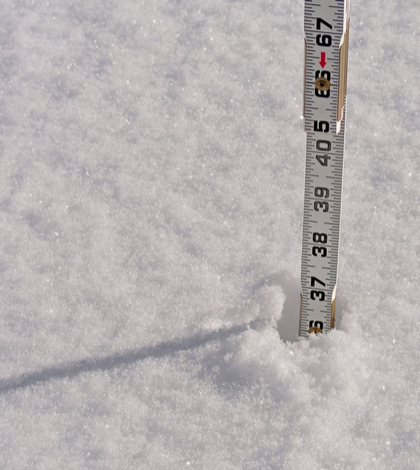The Department of Water Resources’ (DWR) fifth and final manual snow survey of Water Year (WY) 2018-19 at Phillips Station on Thursday recorded a field of plentiful snow. The survey recorded 47 inches of snow depth and a snow water equivalent (SWE) of 27.5 inches or 188 percent of average for this location.
“2019 has been an extremely good year in terms of snowpack,” said Jon Ericson, DWR chief of the Division of Flood Management. “Based on our surveys, we are seeing a very dense, cold snowpack that will continue to produce run-off into late summer.”
But despite the abundant fields of snow blanketing California’s mountain – and the generous rain which fell this winter and spring, water managers continue to caution and advise residents and businesses to continue to practice conservation. The multi-year drought which recently ended is a reminder of the state’s fickle water supply.
“California’s cities and farms can expect ample water supplies this summer,” said DWR Director Karla Nemeth. “But it’s critical that it’s put to use replenishing groundwater basins and storage reservoirs for the next inevitable drought. Every resident and business can also help California by using water as efficiently as possible.”
Statewide, California’s snowpack sits at 31 inches of SWE, which is 144 percent of average for this time of year. Snow water equivalent is the depth of water that theoretically would result if the entire snowpack melted instantaneously. These current readings will aid hydrologists in forecasting spring and summer snowmelt runoff into rivers and reservoirs. The melting snow supplies approximately one-third of the water used within the state. The 2019 snowpack reached its peak on March 31 and is the fifth largest on record, based on more than 250 manual snow surveys conducted each month by the California Cooperative Snow Survey Program.
California’s reservoirs are fed by both rain and snowpack. Lake Shasta, California’s largest surface reservoir, is holding 108 percent of its historical average and sits at 93 percent of capacity. Statewide the six largest reservoirs are now holding near or above their historical averages. San Luis Reservoir in Merced County is holding 96 percent of its historical average and New Melones Lake in both Tuolumne and Calaveras counties stands at 128 percent of its historical average.
The state’s snowpack’s water content is the most important factor for water managers and hydrologists to measure because it is tied directly to water supply. Water content, however, varies from year to year depending on the air temperature, intensity and amount of precipitation as well as snow density.
 California Water News Daily Your Source For Water News in California
California Water News Daily Your Source For Water News in California


